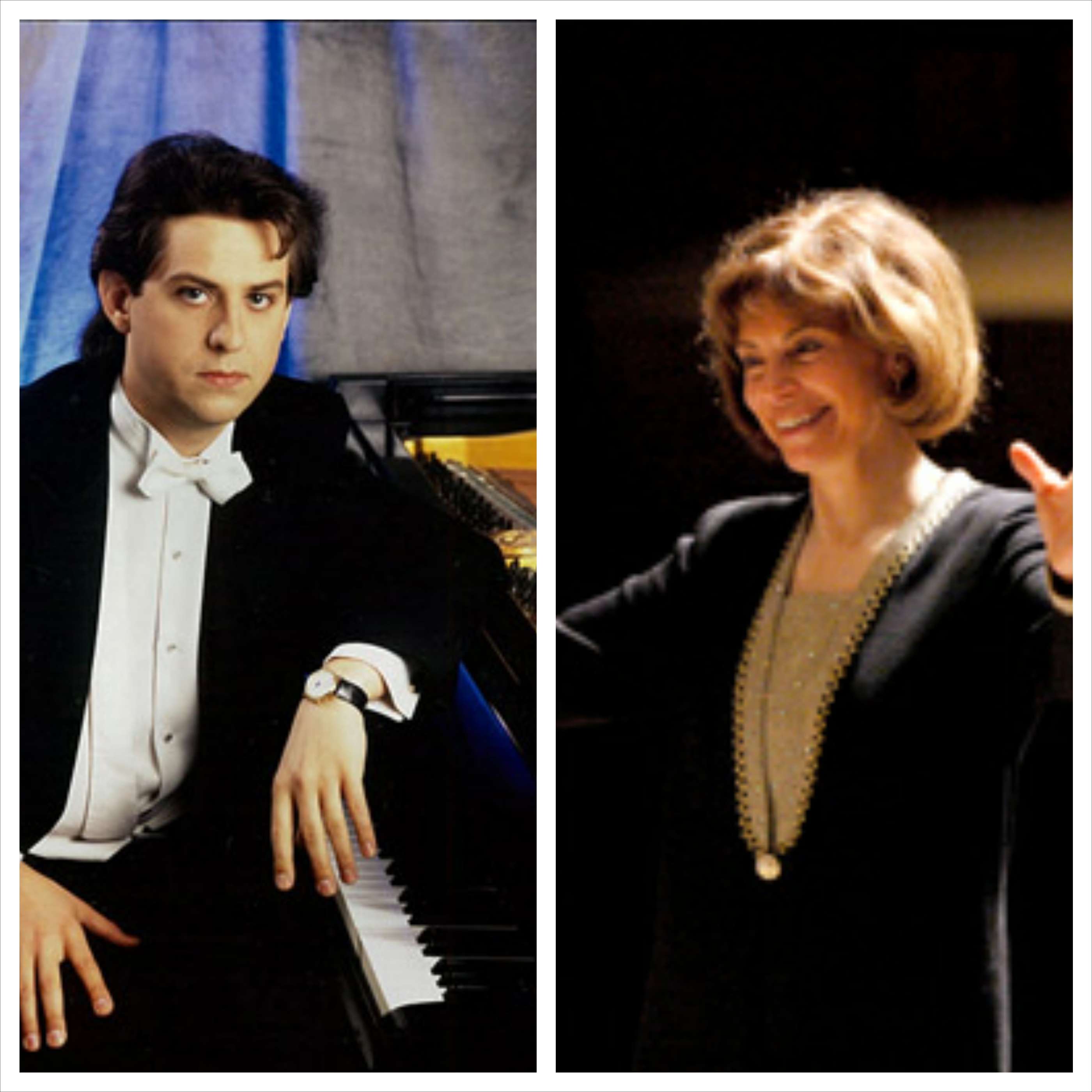|
Back
The Mathieu Myth Unveiled New York
Isaac Stern Auditorium, Carnegie Hall
12/10/2013 -
Wolfgang Amadeus Mozart: Symphony No. 36 (“Linz”), K. 425
André Mathieu: Concertino No. 2, Opus 13 – Piano Concerto No. 4 in E Minor (transcribed for orchestra and piano by Gilles Bellemare)
Alain Lefèvre (Piano)
Orchestra of St. Luke’s, JoAnn Falletta (Conductor)

A. Lefèvre/J. Falletta (© Guy Beaupré/Courtesy of the artist)
A Montreal critic friend described André Mathieu as “a Canadian mythical figure”. Except that the myth is less Canadian than Greek. And after hearing his music last night at Carnegie Hall, it was obvious that the personal tragedy of Mathieu was as awesome–and flawed–as his astonishing music.
Over the past decade, Mathieu’s shadowy myth has come into the sunlight, thanks to pianist Alain Lefèvre, himself a rather astonishing pianist whose name was unknown to me until now. Another Canadian, Mr. Lefèvre presents a dashing figure at the keyboard, his work is equally sparkling. In Mathieu’s demonically difficult works. M. Lefèvre’s fingers danced over the keyboard, he played not a single opaque measure, and that cleanliness, that obviously instinctive musicianship, led to playing which I can only call brilliant.
One caveat. I have heard him only in three works by Mathieu (with whom he holds a virtually proprietary relationship), but would imagine he would be equally at home in bravura concerti as well as Debussy, Scriabin and others from whom the composer was inspired.
The most substantial work on the program was the 40-minute Fourth Concerto, which was not actually “written” by the composer himself. (He had played it on his own, with his own improvisations, the tapes were given to a friend, later sent to Gilles Bellemare, a Canadian composer, who transcribed them and added orchestration) . And that first movement Allegro was one of the most masterful, brilliant lively, scintillating performances I have ever heard of Sergei Rachmaninoff’s Fifth Concerto.
Fifth concerto? No, the Russian wrote only four concerti, but the Mathieu first movement had all the trademarks of Sergei, and was no less entrancing. This was bravura playing at its best, filled with gorgeous melodies, endless fingering problems, and the true marks of genius.
Mr. Lefèvre was at his best. And JoAnn Falletta, who usually leads the Buffalo Philharmonic and is in the forefront of conducting and recording more obscure composers, led the Orchestra of St. Luke’s unerringly.
The next two movements were as fascinating–and incoherent. André Mathieu’s inspiration was as fecund as his lack of structure. Both the Andante and Allegro con fuoco were filled with melodies, cadenzas, electrifying piano playing... everything except a blueprint or an editor’s hand.
Just as well, since any prudent editor would have taken the “Mathieu-ness” out of the work.

A. Mathieu (© Canadian Music Center)
Now who was the “mythic” composer of this music?
Strangely, not even the exhaustive The Art of the Piano lists his name. (Perhaps the Canadian quota was filled by one Glenn Gould.) So briefly (since Mathieu deserves a full book or even an opera; for itself), the composer was born in Montreal in 1929 – that was the final “ordinary” event in his life. A piano prodigy who, in Paris ten years later, was called “the little Canadian Mozart”, he sailed back to Montreal, expecting to return to France. The war prevented this, so on his 11th birthday he went to New York, appeared several times in Carnegie Hall, was already composing and won First Prize for a composer’s contest to celebrate the NY Phil Centenary.
Now comes the tragedy. After the war, he went to France to study with Arthur Honegger, but returned, disappointed. He went back to Montreal expecting to wow them with the “New Romanticism” but Canada shunned him since they were going atonal and electronic. Still, Mathieu kept playing (mainly for himself) composing (with no performances), and in a grand quixotic gesture, performed for more than 21 uninterrupted hours, one minute and 55 seconds improvisations on his own music in 1954.
In frustration he turned to the Demon Rum and died ten years later, two years after Mozart’s age, at 37.
Most of this mini-biography was taken from the excellent notes by Georges Nicholson, who hopefully will write the book on Mathieu. But one further work last night (outside of a Scriabin-influenced encore) was the Second Concertino.
Again, a surprising work. Written when he was 13 years old, the piece begins with chaos, anarchy, and out of this comes 12 minutes of the most juicy piano music. Much sounds like Poulenc or Ibert, but it also sounds original, was played with non-stop vivacity–and deserves to be on any concert platform.
One must ask what would have happened had Mathieu found acceptance, limited his drinking and depression and continued to a ripe old age. Perhaps, like Saint-Saëns and Bruch, he would have simply forgotten his era and continued to write brilliant vieux jeu music. Or perhaps his genius would have, like St. Paul, seen a light and gone in another direction entirely. We will never know.
I have not forgotten Maestra Falletta, who always turns in a tight inspired performance. Her last appearance here with Glière’s long symphony or last night with the Mozart “Linz” were both splendid listening. This was not mannered Mozart or “pretty” Mozart à la the Orpheus program three nights ago. Rather it was sharp, tight-knit highly militaristic and even had a few spots of good humor.
The night, though, belonged to that other composer cut off from maturity. André Mathieu still has music to be played in New York, hopefuly Mr. Lefèvre and Ms. Falletta will be here soon to show us more of André Mathieu melodically-mystifying, frequently mesmerizing mysteries of the piano.
Harry Rolnick
|